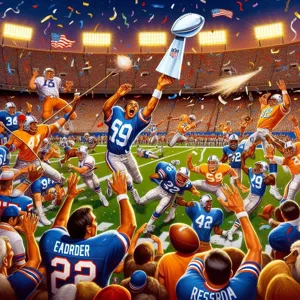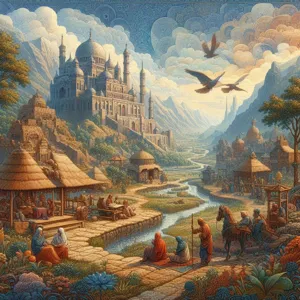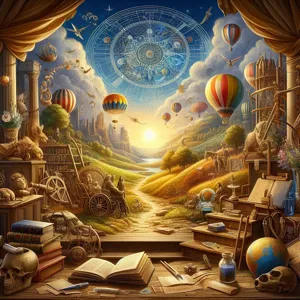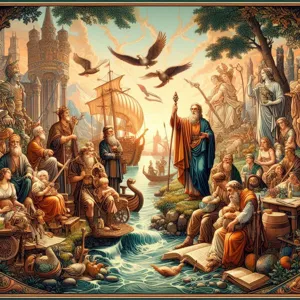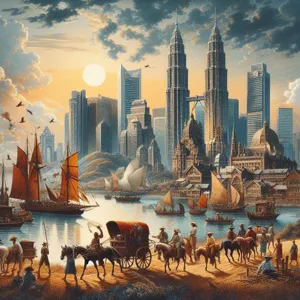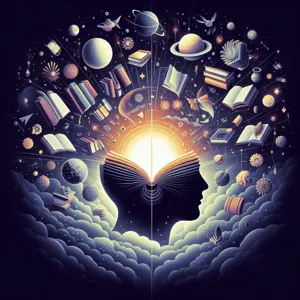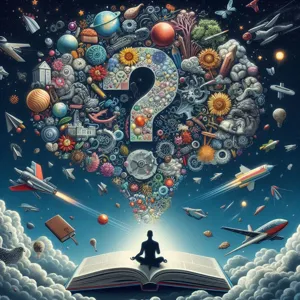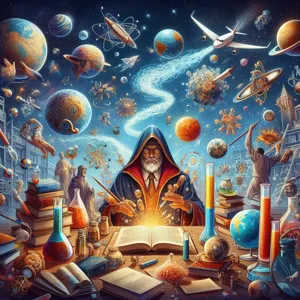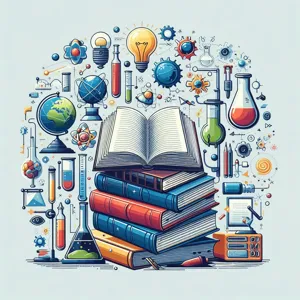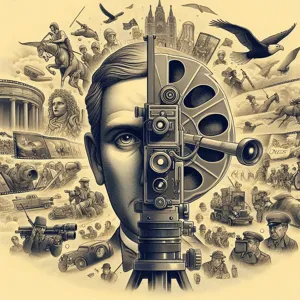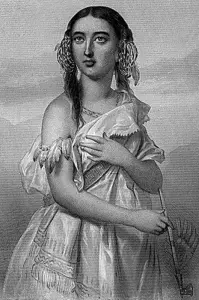Purchasing a vehicle is one of the most significant financial decisions many of us will make, and the choice between buying new or used can often feel overwhelming.
While the allure of that new car smell and the latest features can be tempting, there’s a growing trend towards opting for used cars that may offer a more practical and budget-friendly alternative. In this post, we’ll delve into the pros and cons of buying a used car, examining the potential savings, depreciation rates, and variety available in the pre-owned market, alongside the possible pitfalls such as hidden repairs and limited warranties. By weighing these factors, you’ll gain valuable insights to help determine whether investing in a used car is the right choice for you—one that balances your financial goals with your automotive needs. Join us as we navigate this pivotal decision, ensuring you have all the information necessary to make an informed purchase.
1. Introduction: Understanding the Used Car Market

The used car market is a dynamic landscape filled with opportunities and challenges, making it essential for potential buyers to navigate it with care. As the allure of new cars wanes due to rising prices and the rapid depreciation that occurs the moment a vehicle is driven off the lot, many consumers are turning their attention to the robust world of pre-owned vehicles. This shift has made the used car market an attractive option, offering a diverse array of models, styles, and price points to suit almost any budget.
However, understanding this market is crucial before making a purchase. The landscape is filled with a variety of dealerships, private sellers, and online platforms, each presenting its own set of advantages and pitfalls. Buyers must be aware of factors such as vehicle history, market value, and the potential for hidden issues that may not be immediately apparent. Tools like vehicle history reports and inspection services can be invaluable, providing insights that help steer buyers toward a smart investment.
Furthermore, the used car market is influenced by broader economic trends, including interest rates, fuel prices, and consumer demand. For example, during times of economic uncertainty, the demand for used vehicles typically rises, potentially driving up prices. Conversely, a surplus of inventory can lead to better deals for savvy shoppers.
In this section, we will delve deeper into the intricacies of the used car market, exploring its benefits and drawbacks. By equipping yourself with knowledge, you can make an informed decision about whether purchasing a used car is a smart investment for your lifestyle and financial situation. So, buckle up as we navigate the ins and outs of buying a used car, helping you understand the factors that can lead to either a rewarding purchase or a decision you might regret.
2. Pros of Buying a Used Car
When considering the purchase of a vehicle, the allure of a used car can be particularly strong, offering a myriad of advantages that make it a compelling choice for many buyers. Here are some of the key pros of buying a used car:
**1. Cost Savings:** One of the most significant benefits of purchasing a used car is the financial savings it can offer. Used cars typically come with a substantially lower price tag compared to their brand-new counterparts. This means that you can often afford a higher trim level, more features, or even a luxury vehicle that might be out of reach if you were to buy new. Additionally, the depreciation hit that new cars take—often losing 20% to 30% of their value within the first year—is mitigated when you opt for a pre-owned vehicle, allowing you to get more bang for your buck.
**2. Lower Insurance Rates:** Insurance premiums on used cars tend to be lower than those for new cars. Since the overall market value of a used car is less, insurance companies often charge less to cover it. This can translate into significant savings over time, making a used vehicle an even more attractive option for budget-conscious buyers.
**3. Variety of Choices:** The used car market is vast and varied. Buyers can choose from a wide selection of makes, models, and years, which can often provide more options than the current offerings of new cars. Whether you’re looking for a reliable sedan, a rugged SUV, or a sporty coupe, the used car market has something for everyone. This variety allows buyers to find a vehicle that fits their specific needs and preferences, rather than being limited to what’s currently available new.
**4. Proven Reliability:** Many used cars come with a proven track record of reliability and performance. With thorough research and resources like consumer reports, buyers can easily find models that have received high ratings for durability and low maintenance costs. Furthermore, buying from reputable dealerships often provides the added benefit of a vehicle history report, allowing you to make informed decisions based on the car’s past.
**5. Lower Registration Fees:** In many states, registration fees are based on the value of the vehicle. As such, buying a used car can result in lower registration costs compared to a new car, further enhancing your overall savings.
In summary, the pros of buying a used car are compelling for many consumers. From significant cost savings and lower insurance rates to a diverse selection and proven reliability, it’s easy to see why many car buyers choose the pre-owned route. For those looking to make a smart investment without breaking the bank, a used car can be an excellent choice.
– Cost Savings Compared to New Cars

When it comes to purchasing a vehicle, one of the most compelling reasons to consider a used car is the significant cost savings compared to new cars. New vehicles depreciate rapidly, losing value the moment they leave the dealership. In fact, some estimates suggest that new cars can lose as much as 20% of their value within the first year alone. This depreciation can be a harsh reality for new car buyers, but it presents an opportunity for savvy consumers who opt for used cars.
By choosing a pre-owned vehicle, you can often find a model that is only a few years old, with many of the same features and technologies as its newer counterparts, but at a fraction of the price. This means you can potentially afford a higher-end model or additional features that might have been out of reach if you opted for new. Furthermore, used cars typically come with lower insurance premiums, which can lead to even more savings over time.
Additionally, used cars are often less expensive to register and maintain. Many manufacturers now offer certified pre-owned programs that include extended warranties and thorough inspections, providing peace of mind to buyers. These programs can help mitigate some of the risks associated with purchasing a used vehicle, ensuring that you’re not only saving money upfront but also making a wise long-term investment.
However, it is essential to conduct thorough research and due diligence when buying a used car to ensure you are getting the best value for your money. While the initial savings are enticing, understanding the vehicle’s history, mileage, and overall condition will help you avoid potential pitfalls down the road. Nonetheless, for many, the cost savings associated with buying a used car make it a smart investment worth considering.
– Lower Insurance Premiums
One of the often-overlooked advantages of purchasing a used car is the potential for lower insurance premiums. Unlike new cars, which typically come with higher insurance costs due to their value and the expense involved in replacing or repairing them, used vehicles generally carry a lower price tag. This reduction in value translates directly to savings when it comes to insuring your new ride.
Insurance companies calculate premiums based on various factors, including the car’s make, model, age, and overall market value. Since used cars have already depreciated significantly, you will likely find that the premiums are more manageable compared to their brand-new counterparts. For budget-conscious buyers, this can mean substantial annual savings that can be redirected toward other expenses or even savings for future investments.
Furthermore, many used cars still come equipped with a range of safety features and technologies, allowing you to enjoy modern conveniences without the hefty insurance costs associated with new models. Additionally, some states offer discounts on insurance for older vehicles that are considered classic or vintage, further enhancing your potential savings.
However, it’s essential to keep in mind that the savings on insurance premiums can vary based on the specific vehicle you choose. Factors such as the car’s safety ratings, repair history, and likelihood of theft can influence your insurance costs. Therefore, conducting thorough research on the vehicle’s insurance rates before making a purchase can help you make an informed decision and maximize your savings.
In summary, opting for a used car not only helps you save on the purchase price but can also lead to significant reductions in insurance costs, making it a financially savvy choice for many buyers.
– Reduced Depreciation

When considering the pros and cons of buying a used car, one of the most significant advantages is the reduced depreciation that comes with it. New cars lose value quickly—often as much as 20% to 30% within the first year of ownership alone. This rapid decline in value can be startling for new car buyers, who may find themselves underwater on their loan even before they’ve had a chance to enjoy their new ride.
In contrast, used cars have already undergone much of this initial depreciation. By the time a vehicle is sold as “used,” it has settled into a more stable price point, allowing buyers to make a purchase that retains its value better over time. For example, a car that originally cost $30,000 may only be worth around $20,000 after three years. When you purchase this car as a used vehicle, you’re stepping into a depreciated asset that has already absorbed the bulk of its value loss.
This reduced depreciation translates into smarter financial decisions for savvy buyers. It means that should you decide to sell or trade in the vehicle down the line, you might recover a more significant portion of your initial investment compared to if you had bought new. Additionally, your insurance premiums are often lower for used cars, as their overall value is less, which can result in further savings.
However, it’s essential to conduct thorough research and inspections when buying used. While the reduced depreciation is a compelling factor, ensure that the car’s condition, history, and mileage align with your expectations. A well-maintained used car can offer you the benefits of a smart investment without the steep depreciation curve that new cars face. Ultimately, weighing the value of reduced depreciation against the potential risks is crucial in determining if a used car is indeed the right choice for you.
– Variety of Options Available
When it comes to purchasing a used car, one of the most enticing advantages is the sheer variety of options available. Unlike shopping for new vehicles, where your choices might be limited to the latest models and their specific trims, the used car market offers a vast array of makes, models, and price points, catering to nearly every preference and budget.
Imagine walking into a dealership or browsing online to find everything from compact sedans and rugged SUVs to classic cars and luxury vehicles—all available at your fingertips. This diversity allows you to explore different styles, features, and performance capabilities without the pressure of selecting from the latest releases. Whether you’re seeking a fuel-efficient commuter, a family-friendly minivan, or a sporty coupe for weekend adventures, the used car market has something for everyone.
Moreover, the ability to choose from various model years means you can benefit from significant advancements in technology and safety features without paying the premium price tag of new cars. You might find a slightly older model that still boasts modern conveniences like Bluetooth connectivity, advanced safety systems, and efficient fuel consumption.
Additionally, this extensive selection gives you the option to compare prices across different dealerships and private sellers, enabling you to find the best deal possible. With so many vehicles available, you’re likely to come across models that have maintained their value well, offering a smart investment that balances quality with affordability.
However, this abundance of choice can also lead to decision fatigue, making it essential to approach your search with a clear understanding of your needs and preferences. By taking the time to research and evaluate the various options, you can uncover a used car that not only fits your lifestyle but also offers long-term satisfaction. In the end, the variety of options available in the used car market can turn your car search into a rewarding adventure, paving the way for a wise investment that meets your unique automotive needs.
3. Cons of Buying a Used Car

While buying a used car can offer significant savings and value, it’s essential to weigh the potential drawbacks before making a decision. Here are some of the key cons associated with purchasing a used vehicle:
**1. Unknown History:** One of the most significant risks of buying a used car is the uncertainty surrounding its history. Unlike new cars, which come with a clean slate, pre-owned vehicles may have hidden issues such as previous accidents, flood damage, or mechanical problems that weren’t disclosed by the seller. Even with a vehicle history report, it can be challenging to uncover everything about the car’s past, leading to potential surprises down the road.
**2. Higher Maintenance Costs:** Used cars can often carry the burden of previous wear and tear. As vehicles age, they may require more frequent repairs and maintenance, which can quickly add up. Parts may be worn out or nearing the end of their lifespan, requiring replacements sooner than you might expect. This can lead to unexpected expenses that impact your budget.
**3. Limited Warranty Protection:** Many used cars are sold “as-is,” meaning the buyer assumes all responsibility for future repairs. While some dealerships offer limited warranties on certain used cars, these are often not as comprehensive as warranties for new vehicles. Without warranty coverage, you could be left facing costly repairs without any financial safety net.
**4. Outdated Technology and Safety Features:** Technology in the automotive industry evolves rapidly. Used cars may lack the latest advancements in safety and convenience features, such as advanced driver-assistance systems, infotainment upgrades, or improved fuel efficiency. This can be a significant downside for buyers looking for modern conveniences that enhance the driving experience.
**5. Resale Value Concerns:** When buying a used car, it’s important to consider its potential resale value. Older vehicles typically depreciate at a slower rate than new cars, but they still lose value over time. If you plan to sell the car in a few years, you may find that its resale value isn’t as high as you anticipated, especially if it has high mileage or requires significant repairs before resale.
In conclusion, while there are many compelling reasons to consider a used car, it’s crucial to consider these cons carefully. Doing thorough research, obtaining a comprehensive vehicle history report, and potentially having the car inspected by a trusted mechanic can help mitigate some of these risks, ensuring that your investment aligns with your expectations and needs.
– Potential for Hidden Issues
When considering the purchase of a used car, one of the most significant factors to weigh is the potential for hidden issues lurking beneath the surface. Unlike new cars, which come with warranties and the guarantee of pristine condition, used vehicles carry a level of uncertainty that can lead to unexpected repairs and expenses.
As you inspect a secondhand ride, it’s essential to remember that not all defects are visible at first glance. A car may appear immaculate on the outside—shiny paint, spotless interior, and well-maintained tires—yet it could be hiding mechanical issues, such as a faulty transmission, worn-out brakes, or an engine that’s seen better days. These problems may not become apparent until you’ve already made the purchase, leaving you with the daunting reality of a hefty repair bill.
Additionally, there’s the risk of previous accidents that may have been poorly repaired or undisclosed. A vehicle history report can help mitigate this risk by revealing whether the car has been in any collisions, suffered flood damage, or had its odometer tampered with. However, not all issues are recorded, and some sellers may attempt to conceal problems with deceptive practices.
For those on a budget, the allure of a great deal on a used car can be tempting, but it’s crucial to approach the purchase with caution. Investing in a thorough pre-purchase inspection by a trusted mechanic can provide peace of mind and help uncover potential hidden issues before you make a commitment. While buying a used car can be a smart financial move, understanding and addressing the risks associated with hidden problems is vital to ensuring that your investment is truly worthwhile.
– Limited or No Warranty
When considering the purchase of a used car, one significant factor to weigh is the limited or nonexistent warranty that often accompanies these vehicles. Unlike new cars, which typically come with robust manufacturer warranties that cover extensive repairs and maintenance for several years, used cars can leave you vulnerable to unexpected costs.
Many dealerships may offer limited warranties on used cars, but these are usually shorter in duration and may cover only specific components. This can lead to a scenario where you could be responsible for paying out of pocket for major repairs soon after your purchase. Imagine driving off the lot, only to find that the engine starts making unusual noises or the transmission begins to slip. With a used car, the financial burden of these repairs often falls squarely on the buyer, especially if the warranty has expired or is insufficient.
Additionally, some used cars may be sold “as-is,” meaning that once you drive off, any issues that arise are yours to manage. This lack of coverage can be a daunting reality for buyers who are not well-versed in car mechanics. Without the safety net of a comprehensive warranty, you may find yourself in a precarious situation, particularly if you’re purchasing an older model or one with high mileage, which might be more prone to mechanical failures.
On the flip side, if you’re savvy and do your research—such as obtaining a vehicle history report, having the car inspected by a trusted mechanic, and purchasing from reputable dealerships—you can mitigate some of these risks. Understanding the vehicle’s condition and maintenance history can help you make an informed decision and potentially save you from unexpected repair bills down the line.
Ultimately, while buying a used car can offer significant savings and value, the limited or nonexistent warranty is an essential consideration that can impact your overall ownership experience. Weigh the pros and cons carefully to determine if the potential savings outweigh the risks of unexpected maintenance costs.
– Outdated Technology and Features
When considering the purchase of a used car, one significant factor to weigh is the outdated technology and features that often come with older models. Unlike brand-new vehicles, which are typically outfitted with the latest advancements in automotive technology, used cars can lag behind in terms of safety, convenience, and entertainment features.
For instance, many older models may lack advanced driver-assistance systems (ADAS) such as lane departure warnings, adaptive cruise control, and automatic emergency braking, which have become standard in newer cars. If safety is a priority for you and your family, this could be a notable downside. Additionally, features that enhance the driving experience—like touchscreen infotainment systems, smartphone connectivity via Apple CarPlay or Android Auto, and high-quality sound systems—might be absent or less sophisticated in a used vehicle.
Moreover, the integration of electric and hybrid technology has revolutionized the automotive industry. If you’re eyeing a used car, particularly one that relies solely on traditional gasoline, you may miss out on the fuel efficiency and eco-friendliness that newer electric or hybrid models offer.
While it’s true that the price of a used car is often more budget-friendly, it’s essential to consider the potential lack of modern amenities that could enhance your driving experience and overall satisfaction. If you value the latest technology and features, investing in a newer model may be more beneficial in the long run, ultimately providing a driving experience that aligns with contemporary standards.
– Higher Maintenance Costs
When considering the purchase of a used car, one of the critical factors to weigh is the potential for higher maintenance costs. While the initial price tag of a used vehicle can be significantly lower than that of a new one, it’s essential to remember that older cars often come with their own set of challenges and expenses.
As vehicles age, wear and tear on components become more pronounced. Parts that may have been under warranty in a new car may now require replacement or repair, which can lead to unexpected bills. Common issues such as worn-out brakes, aging tires, or failing batteries can arise, and while these might seem like minor annoyances, they can quickly add up to a substantial financial burden. Additionally, if the previous owner neglected routine maintenance or repairs, you might find yourself facing even more significant costs down the line.
Moreover, with older models, finding replacement parts can sometimes be a hassle. Depending on the make and model, certain components may be harder to source, leading to longer wait times and potentially higher prices, especially if the vehicle is no longer in production. This can be particularly true for luxury or foreign cars, where specialized parts may come with a premium price tag.
On the flip side, some used cars are well-maintained and come with a detailed service history, which can minimize the risk of costly repairs. If you can find a model that has been cared for and is known for its reliability, you may mitigate some of the higher maintenance costs associated with used vehicles.
Ultimately, when weighing the pros and cons of buying a used car, it’s crucial to factor in the potential for increased maintenance costs alongside the initial savings. A thorough inspection by a trusted mechanic and a careful review of the car’s maintenance history can help ensure that your investment remains smart and sustainable in the long run.
4. Evaluating Your Needs: When to Consider a Used Car
When embarking on the journey of car ownership, it’s essential to evaluate your specific needs before making a decision. A used car can be a smart investment if it aligns with your circumstances and lifestyle. Begin by assessing your daily driving habits. If you commute long distances or frequently transport family members, a reliable used vehicle with good fuel efficiency may serve you well. On the other hand, if your driving is primarily local and infrequent, a less expensive model or an older vehicle might meet your needs without breaking the bank.
Another critical factor is your budget. Used cars often come with a significantly lower price tag than new ones, allowing you to stretch your dollars further. However, consider not just the initial purchase price but also the ongoing costs such as insurance, maintenance, and potential repairs. If you’re on a tight budget, opting for a used car can free up funds for other essential expenses or savings.
Additionally, think about your lifestyle and future plans. Are you planning to grow your family or relocate soon? If so, you might need a larger vehicle in the near future, which could influence your decision. Conversely, if you crave flexibility and adventure, a used car might provide the perfect opportunity to explore different options without the commitment of a new vehicle.
Ultimately, evaluating your needs involves a careful consideration of your driving habits, financial situation, and future aspirations. By taking the time to reflect on these factors, you can determine whether a used car is the right choice for you, paving the way for a smart investment that caters to your unique lifestyle.
5. Tips for Finding a Reliable Used Car
When it comes to buying a used car, finding a reliable vehicle is crucial to ensure that your investment pays off in the long run. With a plethora of options available, navigating the used car market can feel overwhelming. However, with the right tips and strategies, you can increase your chances of driving away in a trustworthy ride. Here are some essential tips to guide you in your search for a reliable used car:
### 1. Do Your Homework
Before stepping foot on a dealership lot or browsing online listings, equip yourself with knowledge about the make and model you’re interested in. Research the vehicle’s history, common issues, and average prices. Websites like Kelley Blue Book and Edmunds can provide valuable insights into what you should expect in terms of pricing and reliability ratings.
### 2. Check Vehicle History Reports
Once you’ve found a potential car, request a vehicle history report using the car’s VIN (Vehicle Identification Number). Tools like Carfax or AutoCheck can reveal crucial information about the car’s past, including whether it’s been in any accidents, its service history, and previous ownership. A clean history can be a strong indicator of a reliable vehicle.
### 3. Inspect the Car Thoroughly
Don’t skip the inspection phase! Examine the car both inside and out, checking for signs of wear and tear. look for rust, dents, and paint inconsistencies, as these can be indicators of previous damage. Don’t forget to inspect under the hood for any leaks, corrosion, or signs of poor maintenance. If you’re not confident in your ability to assess the car, consider hiring a professional mechanic to conduct a pre-purchase inspection.
### 4. Take a Test Drive
A test drive is an essential step in the buying process. It allows you to gauge the car’s performance, handling, and comfort level. Pay attention to how the vehicle accelerates, brakes, and navigates turns. Listen for any unusual noises and assess the effectiveness of the brakes and steering. Make sure to drive the car under various conditions, such as on the highway and in stop-and-go traffic.
### 5. Ask the Right Questions
Engage the seller with a list of questions about the car’s condition, maintenance history, and reason for selling. Inquire about any repairs or replacements that have been made, and whether the car is still under any warranty. A transparent seller will be willing to provide this information, giving you further confidence in your purchase.
### 6. Trust Your Instincts
Lastly, trust your gut. If something feels off or if the seller is evasive about the car’s history, it may be best to walk away. There are plenty of reliable used cars out there, and it’s essential to find one that meets your needs and gives you peace of mind.
By following these tips, you can increase your chances of finding a reliable used car that not only fits your budget but also serves you well for years to come. After all, the right vehicle can make all the difference in your driving experience.
6. The Importance of Vehicle History Reports
When it comes to purchasing a used car, one of the most crucial steps in the decision-making process is obtaining a vehicle history report. This document serves as a vital tool, offering a glimpse into the car’s past that can significantly influence your investment. A comprehensive vehicle history report typically includes information about the car’s title status, accident history, service records, previous ownership, and any instances of theft or flooding.
Imagine finding the perfect car that fits your budget and style, only to later discover it was involved in a serious accident or had significant mechanical issues that were never disclosed. This is where a vehicle history report becomes invaluable. It acts as a safeguard against potential pitfalls, allowing you to make an informed decision rather than relying solely on the seller’s word or your own visual inspection.
Moreover, these reports can also help you assess the fair market value of the used car. By providing insights into the vehicle’s condition and history, you can negotiate more confidently, ensuring you don’t overpay for a car that may have hidden problems.
While vehicle history reports are not infallible—some incidents may go unreported—they are an essential part of due diligence in the used car buying process. Investing in a vehicle history report is a small price to pay for the peace of mind it offers, ultimately leading you towards a smarter, more secure investment in your next vehicle. Remember, knowledge is power, and understanding the full story behind a used car can help you drive away with confidence.
7. Getting a Pre-Purchase Inspection
When it comes to buying a used car, one of the most critical steps you can take to safeguard your investment is to get a pre-purchase inspection. This thorough examination, conducted by a qualified mechanic, can reveal hidden issues that may not be immediately apparent during a casual inspection or test drive.
A pre-purchase inspection typically covers key components of the vehicle, including the engine, transmission, brakes, suspension, and electrical systems. The mechanic will assess the overall condition of the car, checking for signs of wear and tear, previous accidents, or neglected maintenance. This proactive step can save you from costly repairs down the line, allowing you to make a more informed decision about your purchase.
Additionally, having a pre-purchase inspection can also serve as a powerful negotiating tool. If the mechanic uncovers any significant problems, you can leverage this information to negotiate a lower price or request that the seller address the issues before finalizing the sale.
While the cost of an inspection may seem like an unnecessary expense at first, consider it an investment in your peace of mind and the long-term reliability of your vehicle. In the world of used cars, where the unknown can often lurk beneath the surface, a pre-purchase inspection is not just a recommendation; it’s a crucial step that can help ensure your purchase is not only smart but also safe. Remember, a little diligence at this stage can lead to years of dependable driving, making it a worthwhile consideration in your car-buying journey.
8. Financing Options for Used Cars
When it comes to financing a used car, the options available can be as varied as the vehicles themselves. Understanding these financing avenues is crucial for making a smart investment.
One of the most common methods is through traditional auto loans, which are typically offered by banks, credit unions, or online lenders. These loans allow you to borrow a specific amount to cover the cost of the car, and you’ll repay it in monthly installments over a set period, usually with a fixed interest rate. Credit unions often offer competitive rates, so it may be worth checking your local credit union for attractive deals.
Another popular option is dealer financing. Many dealerships provide financing directly through in-house programs or have partnerships with financial institutions. While this may be convenient and can sometimes come with promotional offers such as low or zero interest rates, it’s essential to read the fine print. Dealer financing can sometimes lead to higher overall costs if the terms are not favorable.
For those with less-than-perfect credit, there are specialized lenders that cater specifically to used car buyers with bad credit. While these loans may come with higher interest rates, they can still be a viable pathway to ownership, allowing you to build or improve your credit score over time.
Additionally, consider the option of personal loans. These can provide you with the flexibility to purchase a used car without being tied to collateral. However, interest rates on personal loans can be higher than traditional auto loans, so it’s important to compare your options.
Lastly, don’t overlook the possibility of using cash if you have the means. Paying upfront not only eliminates the burden of monthly payments but can also give you leverage in negotiations, as sellers often prefer buyers who can pay immediately.
In summary, financing a used car involves weighing various options, each with its own set of advantages and drawbacks. Take the time to explore all avenues, compare rates, and consider your personal financial situation to ensure that you make the most informed choice possible. After all, the right financing can make the difference between a smart investment and a financial burden.
9. Resale Value: What Happens When You Want to Sell?
When considering the purchase of a used car, one critical factor that often gets overlooked is its resale value. Understanding how depreciation works and what factors influence a vehicle’s worth can help you make a more informed decision and potentially save you money in the long run.
Used cars typically depreciate at a slower rate than new cars. While a new vehicle can lose as much as 20% of its value in the first year alone, a well-chosen used car will have already absorbed much of that initial depreciation. This means that if you decide to sell, you might recoup a significant portion of your investment. Brands known for reliability and durability, such as Honda or Toyota, often command higher resale values because of their reputation for longevity, which can be a decisive factor when it’s time to upgrade or change vehicles.
However, not all used cars hold their value equally. Factors such as mileage, condition, and market demand play pivotal roles in determining resale value. For instance, cars with higher mileage or those that have been in accidents may see a more drastic reduction in value. Additionally, emerging trends—like the growing popularity of electric vehicles—can affect resale prices as consumer preferences shift.
It’s also essential to consider the timing of your sale. The market for used cars can fluctuate based on seasonality and economic conditions. Selling a convertible in the spring or summer, for example, may yield a better price than trying to sell it in the dead of winter when demand is low.
In summary, while purchasing a used car can be a smart investment due to its potential for slower depreciation, it’s vital to consider how the vehicle will perform in the resale market when you’re ready to part ways. Doing your research on specific makes and models, and keeping the car well-maintained, can significantly enhance your chances of a profitable resale when the time comes.
10. The Environmental Impact of Buying Used Cars
When it comes to making environmentally conscious choices, buying a used car can be one of the smartest decisions you can make. The environmental impact of automobile manufacturing is significant, with new vehicles requiring vast amounts of raw materials, energy, and water to produce. By opting for a pre-owned vehicle, you are effectively extending the lifecycle of a car that has already been manufactured, thereby reducing the demand for new production and its associated ecological footprint.
Used cars have the advantage of being more sustainable. Each time you choose to buy pre-owned, you are helping to decrease the number of vehicles that need to be manufactured. This helps conserve natural resources, minimizes waste, and lowers carbon emissions associated with the production process. Additionally, the environmental cost of shipping new cars from factories to dealerships contributes to pollution, which can be bypassed by purchasing a vehicle that is already on the road.
However, it’s essential to consider the condition and emissions of the used vehicle you are contemplating. Older cars, particularly those manufactured before the implementation of stricter emissions regulations, may not be as eco-friendly as newer models equipped with advanced technologies designed to reduce fuel consumption and emissions. Therefore, focusing on the age, make, and model of the used car is crucial in assessing its environmental impact.
In summary, buying a used car can indeed be a smart investment not only for your wallet but also for the planet. By making informed choices and considering the emissions profile of the vehicle, you can enjoy the benefits of vehicle ownership while contributing to a more sustainable future.
11. Personal Stories: Experiences from Used Car Buyers
Personal stories from used car buyers can offer invaluable insights and paint a vivid picture of the realities behind purchasing a pre-owned vehicle. These narratives often highlight the unique journeys individuals embark on, revealing both the triumphs and challenges they encounter along the way.
Take Sarah, for example, a first-time car buyer who decided to explore the used car market after realizing her budget wouldn’t stretch to a new model. She shared her excitement and apprehension as she scoured local listings, navigating the fine line between quality and affordability. After weeks of searching, she found a reliable Honda Civic, which not only fit her budget but also came with a glowing record of maintenance. Sarah’s experience underscores the thrill of finding a hidden gem that meets all her needs, ultimately leading to a sense of accomplishment and satisfaction.
Conversely, there’s Mike, who learned the hard way about the potential pitfalls of buying used. He purchased a seemingly perfect Ford Escape, only to discover weeks later that it had serious engine issues that weren’t disclosed during the sale. His experience serves as a cautionary tale, emphasizing the importance of thorough inspections and the need to obtain a vehicle history report before finalizing a purchase. Mike’s story illustrates the unpredictability of buying used and the necessity of doing your homework to avoid costly mistakes.
These personal accounts not only resonate with potential buyers but also serve as reminders of the diverse experiences that accompany the decision to purchase a used car. They reinforce the idea that while buying used can be a smart investment, it’s crucial to approach the process with both enthusiasm and a healthy dose of caution. Ultimately, whether through success or hardship, the stories of used car buyers highlight the importance of research, awareness, and intuition when navigating the pre-owned vehicle landscape.
12. Conclusion: Weighing Your Options
In conclusion, weighing your options between buying a used car and opting for a new vehicle is a multifaceted decision that hinges on various personal and financial factors. As we’ve explored throughout this post, the allure of a used car often lies in its affordability and the potential for significant savings. You can find a reliable vehicle at a fraction of the cost of a new model, often with lower depreciation rates and the opportunity to avoid the hefty fees associated with new car purchases.
However, the potential drawbacks shouldn’t be overlooked. Used cars can come with hidden issues, varying degrees of reliability, and a lack of warranty protection, which can lead to unexpected repair costs. It’s essential to conduct thorough research, including obtaining a vehicle history report, having a trusted mechanic inspect the car, and assessing the previous owner’s maintenance records.
Ultimately, the decision should align with your lifestyle, budget, and long-term goals. If you prioritize cost savings and are willing to invest the time and effort into finding a well-maintained vehicle, a used car may be a smart investment. On the other hand, if peace of mind, cutting-edge technology, and warranty coverage are at the top of your list, you might lean toward a new car. Whichever route you choose, make sure to weigh the pros and cons carefully, ensuring that your choice reflects your personal needs and financial situation. After all, your vehicle is more than just a mode of transportation; it’s an investment in your daily life and future mobility.
13. Final Thoughts: Is a Used Car Right for You?
When contemplating the purchase of a used car, it’s essential to weigh the myriad factors that influence this significant investment. Used cars can offer substantial savings and a wide selection, making them an appealing choice for many buyers. However, they also come with their own set of challenges that can affect your decision.
First and foremost, consider your budget. If your goal is to maximize value while minimizing costs, a used car can be a smart investment. Unlike new cars, which depreciate quickly in their first few years, used vehicles often hold their value better over time. You can potentially drive a high-quality, well-maintained car without the hefty price tag that comes with a brand-new model. Additionally, used cars typically come with lower insurance premiums, further enhancing their affordability.
On the flip side, it’s crucial to evaluate the risks associated with buying a pre-owned vehicle. Depending on the car’s history, you may encounter hidden issues that could lead to costly repairs down the line. This is why conducting thorough research, obtaining a vehicle history report, and having the car inspected by a trusted mechanic are essential steps in the buying process.
Furthermore, consider your personal preferences and lifestyle. If you value the latest technology, safety features, and warranties, a new car might be more suitable for you. However, if you’re looking for practicality and cost-effectiveness, a used car can meet your needs without sacrificing reliability.
Ultimately, whether a used car is right for you hinges on your financial situation, your willingness to accept some level of risk, and your specific transportation needs. By carefully weighing these pros and cons, you can make an informed decision that aligns with your priorities and lifestyle, ensuring that your investment serves you well for years to come.
In conclusion, purchasing a used car can be a savvy financial decision when approached with careful consideration and thorough research. While the advantages, such as lower purchase prices, reduced depreciation, and the potential for better value, are compelling, it’s crucial to weigh these against the potential drawbacks, including maintenance concerns and limited warranties. Ultimately, whether a used car is a smart investment depends on your unique circumstances, budget, and long-term goals. By taking the time to assess your needs and conducting a diligent inspection of any vehicle you’re considering, you can navigate the used car market with confidence. We hope this guide has empowered you to make an informed choice that suits your lifestyle, and we look forward to hearing about your successful car-buying journey!





